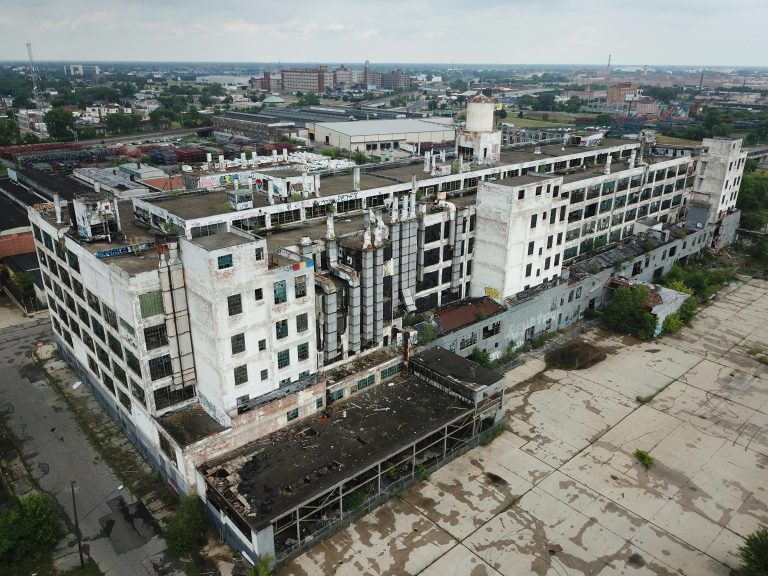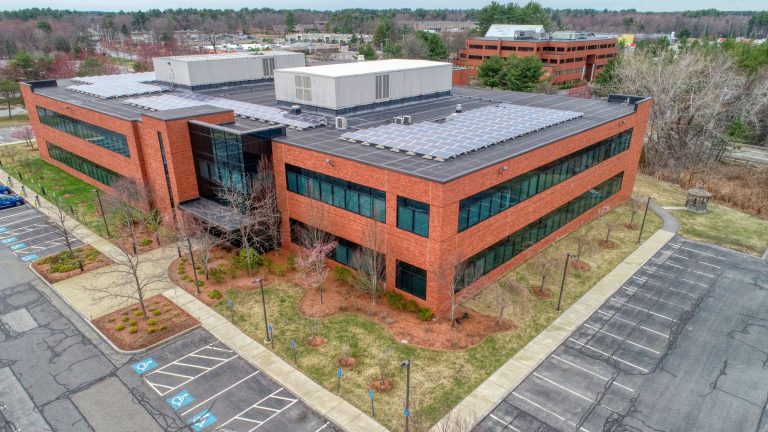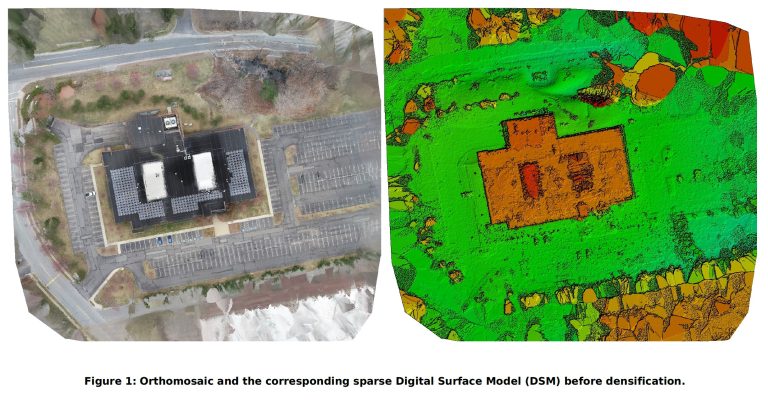How Industrial Building Drone Inspection Boosts Efficiency
When you inspect industrial buildings the traditional way, you often run into big dangers and hefty bills.
Sending workers up on scaffolding or using rope access creates safety hazards and can lead to expensive downtime. You may have heard that drones are quicker, safer, and cheaper compared to those risky, old methods.
But what does an inspection service using drones actually do, and what are the tangible benefits?
You’ll learn industrial drone inspection essentials. We’ll explain how these tools function. And we’ll see why so many companies are now choosing this effective inspection device.
What Are Industrial Building Drone Inspections?
Industrial building drone inspections use unmanned aerial vehicles (UAVs), or drones, equipped with advanced cameras and sensors to examine large structures. Inspection drones get right next to structures. They collect super clear pictures and facts from every angle. We get a clear look at everything, even in tough spots, without ever putting a person in harm’s way.
Our trained inspectors check all that gathered data. They figure out the true shape of roofs, walls, machinery, and even those tough-to-see spots. Using modern detection systems, we can pinpoint potential hazards or faulty equipment from a distance, making sure no one has to face those dangers directly.
Benefits of Using Drones for Industrial Inspections
Companies are rapidly shifting to drone inspections for several compelling reasons.
Improved Safety
One of the biggest advantages is the massive improvement in safety. Workers stay safe on the ground. Drones tackle risky spots, wiping out common dangers.
There is no longer a need for constructing scaffolding, using rope access, going into tanks, or having employees climb tall ladders and walk on unstable surfaces.
That’s where drone tech becomes an essential helper. Fewer mishaps directly translate to smaller insurance premiums and foster an environment where employee well-being truly comes first.
Cost Savings
Drone inspections are remarkably cost-effective compared to traditional methods. Cutting costs is an irresistible lure. Businesses everywhere quickly adopt anything that helps them save a buck. Forget those big bills for aerial lifts, cranes, or scaffolding. Project expenses shrink big time.
Fast drone checks also mean less time spent by your crew and fewer interruptions to your operations. A power plant or manufacturing facility can continue to operate with minimal interruption while the inspection is underway. Over the long term, regular maintenance inspections with drones can catch small issues before they escalate into costly repairs.
Better Data
Drones capture highly detailed and accurate data that is often superior to what can be gathered by the human eye. Accessing confined spaces becomes simple, offering a steady stream of crisp, detailed visual information captured from diverse perspectives.
That overhead data helps us build incredibly detailed 3D models, basically creating a digital copy of whatever we’re looking at. Inspectors can now get exact measurements, watch how things change over months or years, and really dig into a building’s details, all without leaving their workspace. Armed with these facts, you pick the best maintenance plan.
Faster Inspections
A drone can cover vast areas quickly, dramatically reducing the time required for inspections conducted. A task that might take a team of workers several days can be completed by a drone in a single afternoon. Being efficient truly matters at big factories, busy building sites, or spread-out campuses.
Regular Monitoring
The ease and low cost of drone inspections make regular monitoring practical. With this smart way of handling upkeep, asset managers spot tiny glitches. That stops them from becoming giant, expensive breakdowns. For example, a small crack in a storage tank or a few loose shingles on a roof can be identified and repaired quickly and cheaply.
Consistent data collection over time also provides a historical record of an asset’s condition. You’ll know exactly when a machine needs attention, letting you plan your spending wisely and get more years out of your valuable industrial installations.
Common Uses for Industrial Building Drone Inspections
Drones are versatile tools suitable for a wide range of industrial inspection scenarios. From a simple glance to a full-blown technical deep dive, these tools handle it all. You can simply swap out their sensing equipment for whatever the job demands. Here are the key tasks they handle most often.
Roof and Facade Inspections
Drones excel at checking large commercial roofs and building facades for damage, leaks, and general wear. They can easily spot issues like cracked tiles, failing seals, or water pooling that are difficult to see from the ground.
Equipment and Infrastructure Inspections
Industrial sites are filled with hard-to-reach equipment that requires regular checks. A drone inspection can safely assess assets like smokestacks, communication towers, storage tanks, and pipelines. For example, a tank inspection can identify corrosion or weak points without the need for a person to enter a hazardous, confined space.
Thermal Inspections
Drones equipped with thermal imaging cameras can detect temperature variations on a building’s surface. This technology spots where your building loses heat from bad insulation. It also uncovers hidden moisture inside walls or roofs, plus it pinpoints any electrical parts that are getting too hot. Thermal inspections are a non-invasive way to find hidden problems that a standard visual inspection would miss.
Construction Progress Monitoring
On a busy construction site, drones provide an invaluable bird’s-eye view. With these, you’ll easily watch your project move forward, know exactly what materials you have on hand, and get accurate maps of the entire area. They can decide on equipment placement more effectively, keep construction timelines solid, and spot things like unstable ground or falling debris risks before anyone gets hurt.
Challenges and Limitations of Drone Inspections
While industrial drone inspections offer many benefits, there are some challenges to consider. Acknowledging constraints permits firms to forecast accurately.
Regulations and Compliance
The use of commercial drones is regulated by aviation authorities like the FAA in the United States. Drone operators must be licensed, and flights often have restrictions regarding altitude, time of day, and proximity to airports or crowds. Knowing these rules inside and out takes a pro. Otherwise, you’ll hit roadblocks on when and where you can actually get an inspection done.
Weather Limitations
Drones are sensitive to weather conditions. Strong winds can affect flight stability and the quality of the drone data, while rain, snow, or extreme temperatures can damage the equipment and ground the drone entirely. This dependency on weather can sometimes lead to inspection delays.
Battery Life and Flight Time
Most commercial camera drones have a flight time of around 20-40 minutes per battery. For very large structures or extensive industrial complexes, this can mean multiple flights are needed to cover the entire area. While operators plan for this by bringing multiple batteries, it can interrupt the workflow of data collection.
Data Management
A single drone inspection can generate a huge volume of high-resolution images and videos. Handling massive piles of information – like all that raw data – demands serious computer muscle and rock-solid systems to keep it organized. Without the right software and hardware, managing this information can be a challenge.
Initial Costs and Training
While saving money in the long run, setting up an in-house drone inspection program has upfront costs. You have to acquire high-performance drones, advanced sensing equipment, and necessary software. Expert instruction for your flight crew is also a priority. For many companies, outsourcing to a dedicated drone inspection service is a more practical option.
Choosing Drone Inspection Services
If you’re considering an industrial building drone inspection, you can either build an in-house team or hire a professional service. For most businesses, hiring an external provider is more efficient and reliable. As you look for a company, you’ll definitely want to spot those specific qualities that prove they’re a good choice.
Here are some things to look for in a drone inspection company:
- Proper Licensing and Insurance – The service provider must have the necessary FAA certifications (like a Part 107 license) and carry sufficient liability insurance.
- Industry-Specific Experience – The right company will have stories to tell and past work to show that fits your kind of building. Does their past work include places like your warehouse, power plant, or construction zone?
- High-Quality Equipment and Software – A good inspection comes down to the drone and what its cameras see. Ask what gadgets and software do they rely on to break down all that information.
- Clear Reporting and Data Delivery – A solid service partner hands over reports that make sense, showing you exactly what’s happening and telling you what steps to take next.
- Strong Safety Protocols – Ask them about their safety practices. What do they check before every flight? And how do they react if something unexpected happens?
The Future of Industrial Building Drone Inspections
Drone technology is advancing at a rapid pace. Expect industrial drones to inspect with new smarts. This will make jobs quicker and the data we get much clearer.
AI and Machine Learning
Artificial intelligence will play a huge role in analyzing drone data. AI algorithms will be able to automatically detect, classify, and even predict defects like cracks, corrosion, or leaks from thousands of images. Imagine analysis happening in a flash, with human errors practically gone. Inspectors can then pour all their energy into solving the most serious problems.
Better Sensors and Payloads
New and improved sensors will allow drones to capture more types of data: LiDAR creates amazingly accurate 3D pictures, hyperspectral sensors help us understand the environment, and ultrasonic tools let us measure how thick storage tank walls are.
Longer Flight Times
Because drone batteries keep getting better, these flying machines can stay in the air for much longer. Imagine drones that never need to land for a battery swap; they get power through a cord! We’re also seeing clever hybrid drones that blend gas and electric power, letting them stay in the air for hours on end.
Indoor and Confined Space Navigation
Advances in navigation technology, such as SLAM (Simultaneous Localization and Mapping), are making it easier for drones to fly safely inside buildings and in confined spaces without GPS. Now, checking inside big warehouses, boilers, and storage tanks becomes much easier. This remote visual access prevents sending humans into potentially dangerous environments.
Conclusion
Industrial building drone inspection is fundamentally changing how businesses maintain and monitor their large structures.
You’ll see operations become much safer, costs drop significantly, and the information gathered will be incredibly precise.
A few snags like flight time limitations, weather dependence, and regulatory constraints, remain. Yet, the technology improves quickly, making it widely available.
If you have not yet considered how drone inspections provide value for your facilities, now may be the time to take a closer look.




